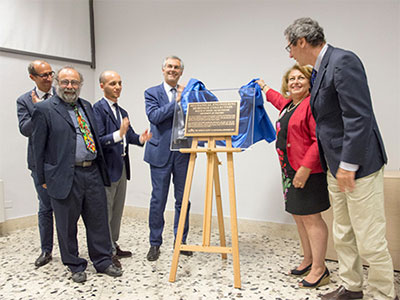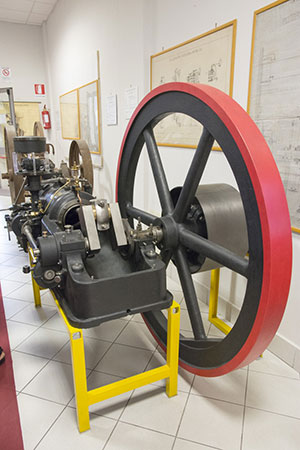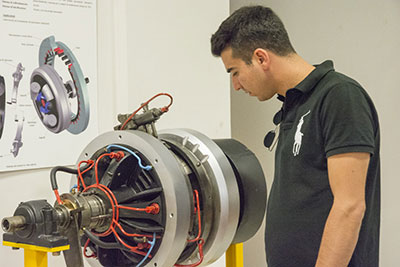ASME Recognizes Engine Collection in Italy for Its Historical Importance
ASME Recognizes Engine Collection in Italy for Its Historical Importance
June 9, 2017

A collection of more than 100 artifacts at the University of Palermo in Italy — including a variety of steam, automotive and aircraft engines — was recently recognized by ASME for its historical significance. The engine collection, which is housed at the university’s Museum of Engines and Mechanisms, was designated as an ASME Historic Mechanical Engineering Heritage Collection during a ceremony held on May 31 at the museum.

Approximately 125 people attended the designation ceremony, which was the first ASME landmark recognition program held in Italy. Attendees included members of ASME leadership and the ASME History and Heritage Committee, as well as students, government officials, members of the military, and employees and friends of the museum.

The collection of engines at the University of Palermo consists of both stationary and transportation power units, with an emphasis on automotive and aircraft engines, and features both reciprocating and turbine designs, many of which are now rare. Some of the more notable items in the collection include the Neville stationary steam engine and the Ljungström counter-rotating steam turbine, the FIAT 8V and FIAT-Ferrari Dino automobile engines, and the Siemens-Halske Sh.IIIa counter-rotary aircraft engine and the General Electric J47 turbojet engine.

During her presentation of the Historic Mechanical Engineering Heritage Collection plaque, ASME Past President Madiha El Mehelmy Kotb noted several reasons the museum’s collection was significant, including that the collection was novel because the engines are displayed in the museum without their coverings and because the types of engines were varied, ranging from everyday engines used in factories to high-performance automobile and airplane engines. The collection is also chronological, displaying the evolution of engine technology from the late 19th through late 20th centuries, and shows the many fields that are touched by mechanical engineering, including transportation, manufacturing and agriculture, she said.

In addition, the designation of the collection acknowledged the museum’s efforts in the important but difficult enterprise of technology preservation. “Technology, like these machines, becomes outdated and their size and performance requirements become inconvenient,” Kotb said. “When we find efforts to conserve and open this history to the public, we should applaud and support those who make that possible. It pleases ASME to bring attention to the wonderful work you have done with this collection, with so much of it operational.”
Also representing ASME at the ceremony were Thomas H. Fehring, chair of the ASME History and Heritage Committee, and ASME Fellow Marco Ceccarelli, who nominated the collection. In addition to Kotb, the ceremony’s other speakers included Juan Diego Catalano Ugdulena, a representative from the office of the mayor of Palermo; Fabrizio Micari, rector of the University of Palermo; Paolo Inglese, director of the Museum System of the University of Palermo; and Giuseppe Genchi, the museum’s founder.




